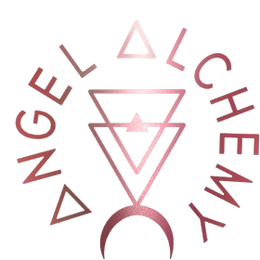
Nothing is more beautiful than shiny bright gems and jewels reflecting the light and adding to their brilliance. Gems and crystals are frequently employed in the jewelry industry to make dazzling ornaments. But do you know the difference between crystals and gems? Here you will find the best answer to your question.
Gems are also known as gemstones. These are crude and rare pieces of minerals, organic matter, and rock stones that are excavated, cut, and polished to perfection for use in jewelry production. In contrast, crystals are pure substances composed of atoms, molecules, or ions arranged in three-dimensional lattices.
"A gemstone can be a crystal, but a crystal cannot be a gemstone."
For example, a diamond is a gemstone and a crystal, whereas sugar is a crystal but not a gemstone. Similarly, ice and salt are crystals but are not regarded as gems. In contrast, amethyst is a crystal and a semi-precious gemstone. The following description clearly explains the difference between crystals and gems in detail.
What are Gems?
Gems or gemstones are rare Earth substances in mineral, rock, or organic states. These are excavated or discovered underwater in crude form and are then chiseled, carved, and polished before they are sent to jewelers. Gemstones are classified as precious and semi-precious stones. However, this classification is only based on commercial context and does not provide any evidence of the value of these natural products.
According to this context, there are four precious gemstones: diamond, ruby, sapphire, and emerald. In contrast, semi-precious stones include quartz, topaz, tourmaline, amethyst, and moonstone. Others use the characterization criteria based on clarity, hardness, and rarity. Moreover, a gemstone can be a crystal; for example, amethyst is a semi-precious gem and a beautiful crystal that comes in various purplish hues ranging from light lilac to deep violet.
What are Crystals?
Crystals are pure substances and are three-dimensional lattices composed of atoms, molecules, or ions. These gems exist naturally and are also synthesized in laboratories via crystallization. Moreover, there are seven types of crystal lattices in which atoms or ions are arranged orderly. However, some crystals do not have an ordered arrangement and are referred to as polycrystals; ice is an example.

Difference Between Crystals and Gems:
Definition in Gemology
Gemstones are rare Earth elements in the form of minerals, rock, or organic matter. These are found as crude but are cut and polished to perfection to employ in ornaments. In contrast, crystals are composed of purified substances in which atoms or ions are arranged in three spatial dimensions in the form of a lattice.
ExamplesGemstones include diamond, emerald, ruby, sapphire, tourmaline, rose quartz, amethyst, moonstone, pearl, opal, and garnet. In comparison, crystals are carbon crystals (diamonds), sodium chloride crystals (salt and sugar), and sodium dioxide crystals (quartz).
Composition
Different types of gemstones give unique compositions. For example, diamonds are carbon atoms, and some gems comprise minerals like corundum in rubies. In contrast, crystals are 3-D lattices of peculiar atoms, molecules, and ions unique to the type of crystal. For example, the carbon atoms form the crystal lattice in diamonds, whereas amethyst comprises silicon dioxide arranged trigonally.
Abundance
Gems are less abundant and are found only in certain geographical regions of the World, which is why gemstones are substances. In contrast, crystals occur abundantly in nature and are also easy to synthesize chemically via crystallization. Nevertheless, one can also create gemstones in labs, but they are less worthy.
Classification
Gemstones are classified on many bases. Some gemologists classify them based on their composition, whereas jewelers categorize them based on clarity, hardness, and precision. In contrast, crystals have seven crystal systems: cubic, tetragonal, trigonal, triclinic, hexagonal, monoclinic, or orthorhombic.
Peculiar Characteristics
Gems have a refractive index, luster, specific gravity hardness, clarity, dispersion, and fracture. In comparison, crystals have numerous physical, electric, and magnetic properties.
Value
Gemstones are costly compared to crystals due to their rarity in nature and unique brilliance. Nevertheless, some semi-precious gemstones also crystals are too expensive than precious gems. The pricing and value of gems and crystals vary widely and have no particular value chart.
Applications
Gemstones are frequently employed in jewelry production, including rings, earrings, necklaces, crowns, and other ornaments like embellished swords of Royals. In comparison, crystals are primarily used in adorning jewelry articles, particularly lab-grown crystals used in making artificial jewelry. Moreover, these are employed in various decorative pieces.
Taking It All In:
To sum up, a gemstone can be a crystal, but a crystal cannot be a gem. These sparkling substances are used in making jewelry and embellishing decorative articles; however, crystals and gems are widely in composition, characteristics, and worth. Gems are also known as gemstones that can be precious and semi-precious, whereas crystals can be gems like diamonds and amethyst and polycrystals like ice, metals, and ceramics.


